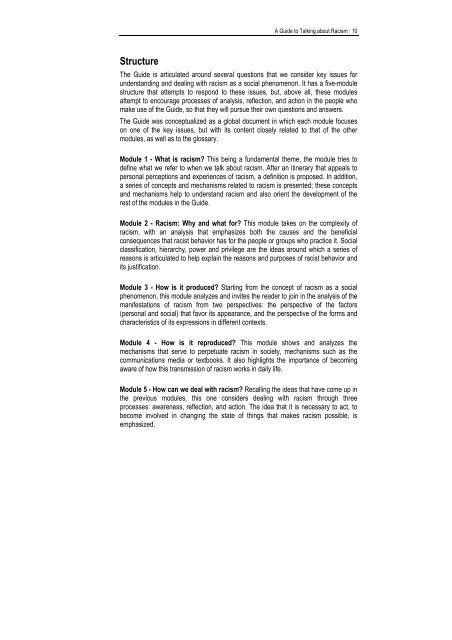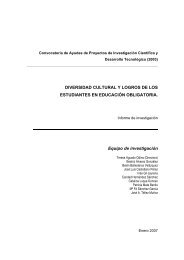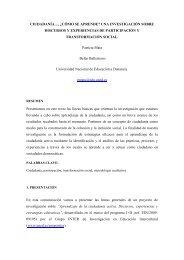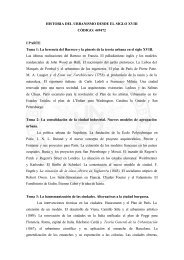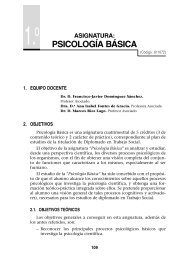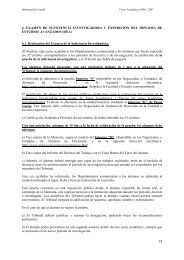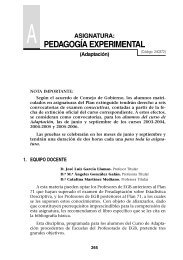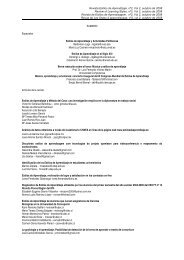Racism: What It Is and How to Deal with It - Uned
Racism: What It Is and How to Deal with It - Uned
Racism: What It Is and How to Deal with It - Uned
You also want an ePaper? Increase the reach of your titles
YUMPU automatically turns print PDFs into web optimized ePapers that Google loves.
A Guide <strong>to</strong> Talking about <strong>Racism</strong> | 10<br />
Structure<br />
The Guide is articulated around several questions that we consider key issues for<br />
underst<strong>and</strong>ing <strong>and</strong> dealing <strong>with</strong> racism as a social phenomenon. <strong>It</strong> has a five-module<br />
structure that attempts <strong>to</strong> respond <strong>to</strong> these issues, but, above all, these modules<br />
attempt <strong>to</strong> encourage processes of analysis, reflection, <strong>and</strong> action in the people who<br />
make use of the Guide, so that they will pursue their own questions <strong>and</strong> answers.<br />
The Guide was conceptualized as a global document in which each module focuses<br />
on one of the key issues, but <strong>with</strong> its content closely related <strong>to</strong> that of the other<br />
modules, as well as <strong>to</strong> the glossary.<br />
Module 1 - <strong>What</strong> is racism? This being a fundamental theme, the module tries <strong>to</strong><br />
define what we refer <strong>to</strong> when we talk about racism. After an itinerary that appeals <strong>to</strong><br />
personal perceptions <strong>and</strong> experiences of racism, a definition is proposed. In addition,<br />
a series of concepts <strong>and</strong> mechanisms related <strong>to</strong> racism is presented; these concepts<br />
<strong>and</strong> mechanisms help <strong>to</strong> underst<strong>and</strong> racism <strong>and</strong> also orient the development of the<br />
rest of the modules in the Guide.<br />
Module 2 - <strong>Racism</strong>: Why <strong>and</strong> what for? This module takes on the complexity of<br />
racism, <strong>with</strong> an analysis that emphasizes both the causes <strong>and</strong> the beneficial<br />
consequences that racist behavior has for the people or groups who practice it. Social<br />
classification, hierarchy, power <strong>and</strong> privilege are the ideas around which a series of<br />
reasons is articulated <strong>to</strong> help explain the reasons <strong>and</strong> purposes of racist behavior <strong>and</strong><br />
its justification.<br />
Module 3 - <strong>How</strong> is it produced? Starting from the concept of racism as a social<br />
phenomenon, this module analyzes <strong>and</strong> invites the reader <strong>to</strong> join in the analysis of the<br />
manifestations of racism from two perspectives: the perspective of the fac<strong>to</strong>rs<br />
(personal <strong>and</strong> social) that favor its appearance, <strong>and</strong> the perspective of the forms <strong>and</strong><br />
characteristics of its expressions in different contexts.<br />
Module 4 - <strong>How</strong> is it reproduced? This module shows <strong>and</strong> analyzes the<br />
mechanisms that serve <strong>to</strong> perpetuate racism in society, mechanisms such as the<br />
communications media or textbooks. <strong>It</strong> also highlights the importance of becoming<br />
aware of how this transmission of racism works in daily life.<br />
Module 5 - <strong>How</strong> can we deal <strong>with</strong> racism? Recalling the ideas that have come up in<br />
the previous modules, this one considers dealing <strong>with</strong> racism through three<br />
processes: awareness, reflection, <strong>and</strong> action. The idea that it is necessary <strong>to</strong> act, <strong>to</strong><br />
become involved in changing the state of things that makes racism possible, is<br />
emphasized.


